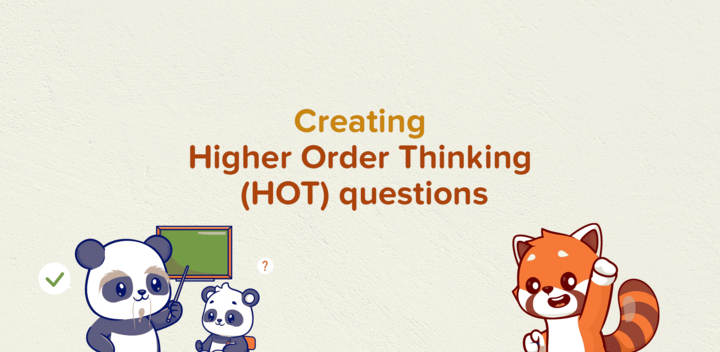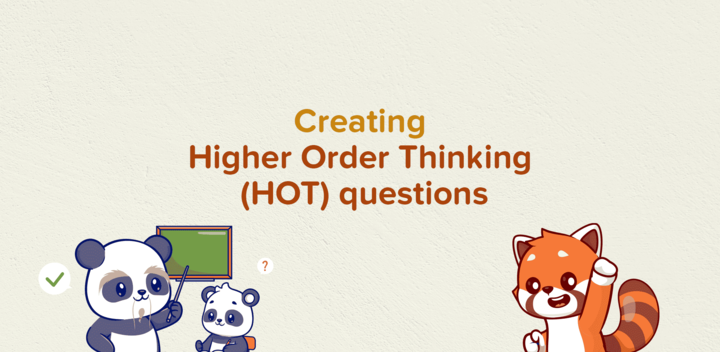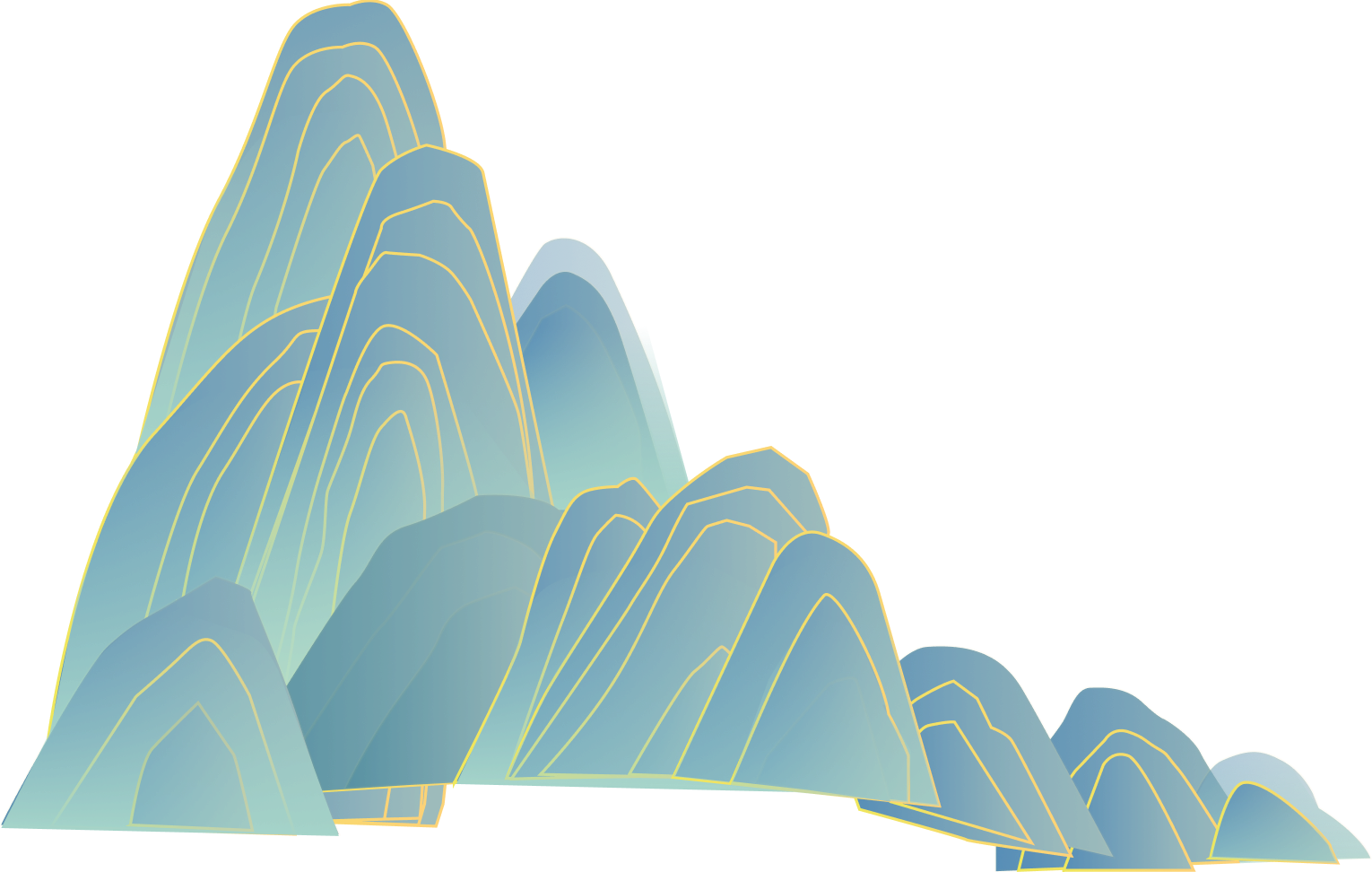
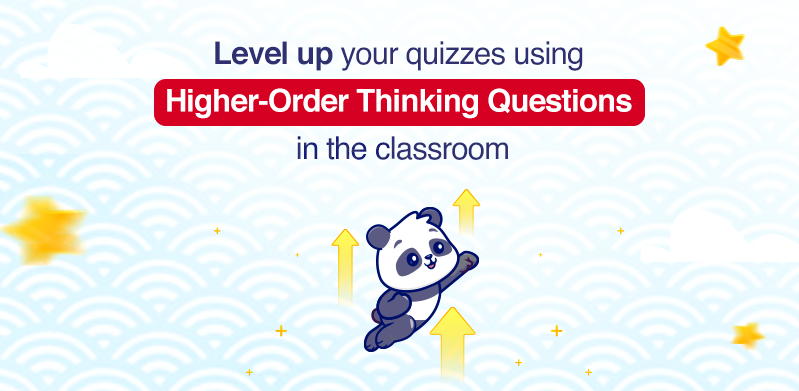
Teaching Strategy: Level up your Quizzes using Higher-Order Thinking (HOTs) Questions in the Classroom
Published on 26 Aug, 2025
Interactive quizzes have been a staple in the classrooms. They help teachers promptly check what students remember, but too often they stop at just that. However, the real goal is not to just test memory, it is to spark creative thinking, encourage problem solving skills and enable a deeper understanding to grasp concepts. That is where Higher-Order Thinking Skills (HOTs) questions come in.
For example:
If you ask, "What year was the peace treaty signed?", you are asking students to recall a level one fact. It is safe, but it lacks depth.
But if you ask, "If the leaders who signed that treaty were to get together today, how and why would they change the terms of that treaty to meet modern issues like climate change or cyberwar?" Now that is what High Order Thinking is!
By moving beyond the "what", HOTs questions challenge students to evaluate and think about the "why" and "how" of the question. When these types of questions are embedded into a quiz format then they transform the quizzes from routine class assessments into a more advanced learning with critical thinking.
In this blog, we'll explore what HOTs questions are, why they matter, and how teachers can use them in the classroom by exploring an online quiz tool, Kung Fu Quiz which provides a fun and interactive format to engage students to think harder, and not just memorize answers.

What are Higher-Order Thinking Skills (HOTs)?
Higher-Order thinking skills (HOTs) questions are more than simple queries. They encourage students to apply deeper levels of reasoning, and analysis of the subject matter. Instead of asking students "What happened?" HOTs questions challenge students to ask "Why did it happen?" or "How can this idea be applied in a new situation?"
More often connected with Bloom's Taxonomy, HOTs sit at the higher level of learning where students are made to apply, analyze, evaluate, and create their answers. In essence, HOTs, questions are not about wrong or the right answers, they are about cultivating the seed of understanding that lasts beyond the exam hall.
By integrating HOTs questions, teachers transform their classrooms into a space for active learning, critical thinking and exploration. They encourage students and teachers to connect ideas, logically reason different perspectives and come up with original ideas and solutions.
When paired with quizzes, HOTs questions become even more powerful. They shift the format of HOTs questions to something that is engaging, interactive and help teachers evaluate their performance with data-driven insights.
Creating HOTs Quizzes with Kung Fu Quiz
Interactive quizzes with multimedia rich elements are more than just a way to assess student's knowledge, they are a formidable tool that allows teachers to integrate HOTs questions into the classroom learning while making it engaging and interactive.
Kung Fu Quiz, an online quiz maker for teachers makes it simple to create engaging quizzes for HOTs questions, making generally complicated questions into a gamified quiz format that students can actively analyze, evaluate, and create, moving beyond mere memorization. By combining multimedia elements, and real time-feedback, these quizzes turn learning into an active process and enhances the engagement of students for the HOTs questions.
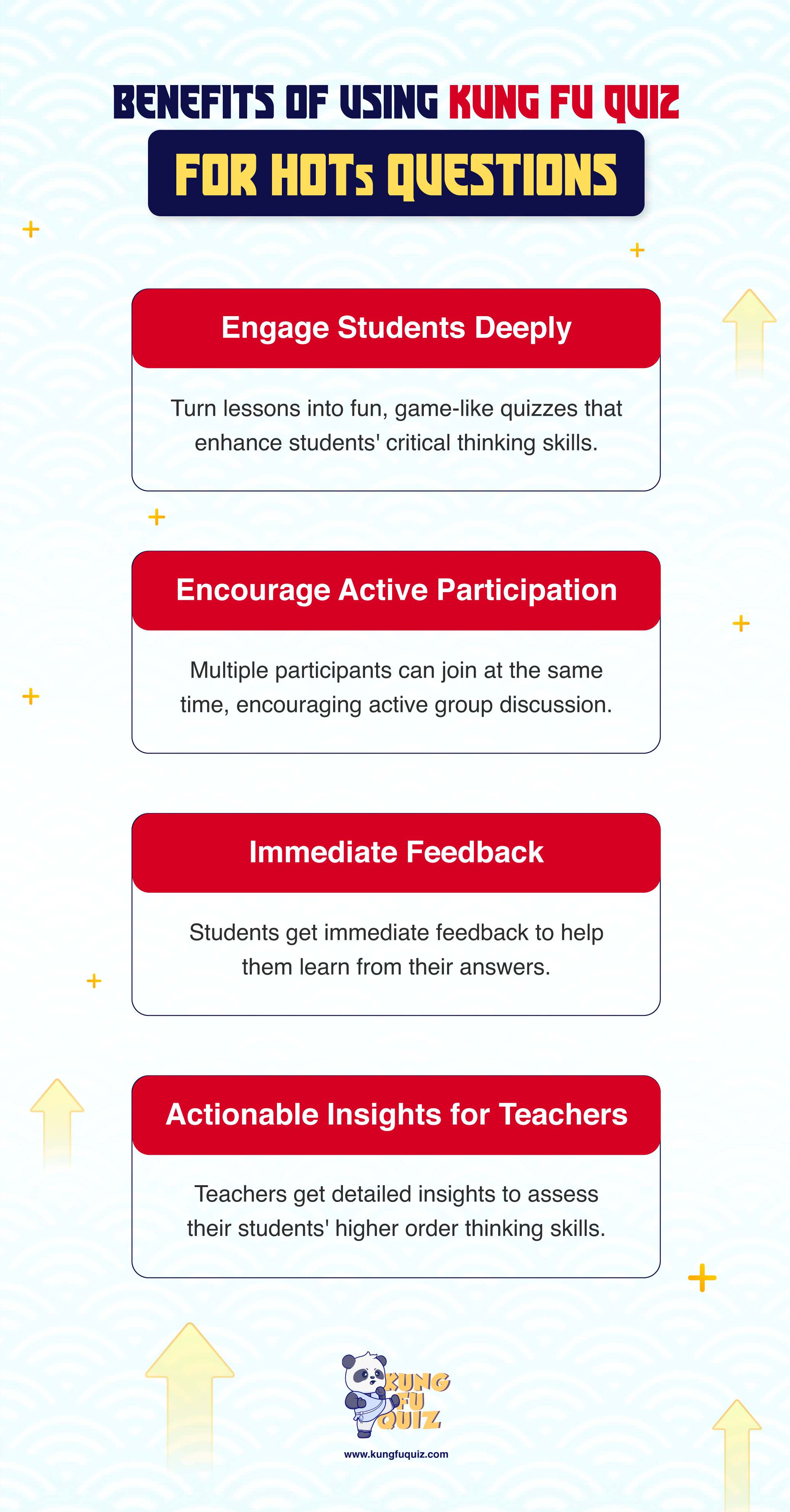
Benefits of using Kung Fu Quiz for HOTs Questions
- Engagement drives deeper thinking: Kung Fu Quiz allows teachers to create HOTs questions with visuals, audio, and problem-based scenarios which provide a game-like environment, making it easier to grab students' attention.
- Encourages active participation: These quizzes allow teachers to have multiple students play the quiz simultaneously, leading to varied responses. These responses can be an active part of the classroom discussion, sparking new ideas and exposing students to diverse viewpoints, ultimately enhancing collaborative reasoning.
- Immediate Feedback Supports memory: Kung Fu Quiz gives teachers the ability to allow immediate feedback to students. With such features, students don't just see what's right or wrong; they are prompted to immediately reason with their answers, which is an essential part of mastering HOTs.
- Actionable Insights for Teachers: Kung Fu Quiz does not only mark answers as right or wrong. It shows teachers how each student responded, highlighting their reasoning process compared to all the students in the classroom. This helps teachers pinpoint gaps in logic, track the progress in higher-order skills, and ultimately make targeted teaching decisions for students.
In summary, HOT's quizzes do not merely assess what learners know; they also create HOT's knowledge. In some respects, the most powerful use of any polls, questionnaires or quizzes where HOT's assumption is made, is to improve the quality of real-time reasoning while students work to refine their responses. Students undertaking HOTs are not only making one choice from an effective set of right answers, but they are reasoning, comparing, predicting and reflecting. The interactive and multimedia elements complement a number of different learning styles, reinforce student engagement and retention. Perhaps most importantly, they offer alignment with 21st-century learning goals that support and shape working environments and the experiences they expect, to learn creativity, collaboration, and critical thinking needed to navigate contemporary complex challenges. HOT's questions applied to polls or quizzes have the potential to ignite HOT's learning opportunity.
Thus, teachers can use interactive or online quizzes alongside HOTs-based questions to spark meaningful discussions, encouraging students to think beyond the obvious and explore ideas more.
FAQs About Higher-Order Thinking Skills (HOTs)
What are Higher-Order Thinking Skills (HOTs)?
HOTs are advanced thinking processes, analysis, evaluation, and creation that go beyond memorising facts, helping students make connections and solve complex problems.
Why are HOTs important in education?
They develop critical thinking, creativity, and problem-solving skills that students need for academic success and real-world challenges.
How can teachers promote HOTs in the classroom?
By asking open-ended questions, using real-world scenarios, encouraging debates, and integrating interactive tools like Kung Fu Quiz.
What is the difference between LOTs and HOTs?
Lower-Order Thinking Skills (LOTs) focus on remembering and understanding; HOTs require deeper thinking like analysis, evaluation, and creation.
Can HOTs be assessed in quizzes?
Yes. HOTs-based quizzes use prompts that require students to compare, justify, propose, or design solutions, often with multimedia and interactive formats.
Do HOTs benefit all types of learners?
Absolutely! They cater to different learning styles, foster engagement, and help all students build adaptable skills for the 21st century.



